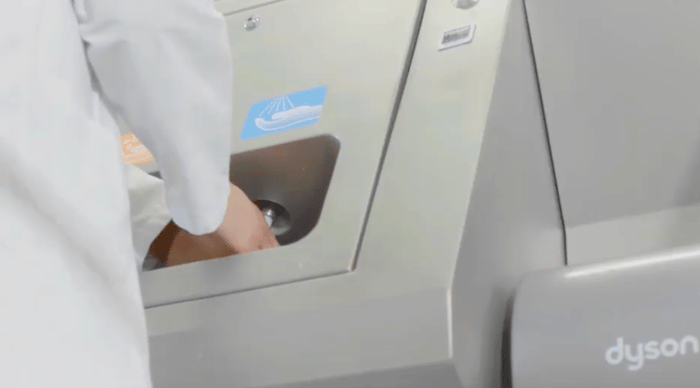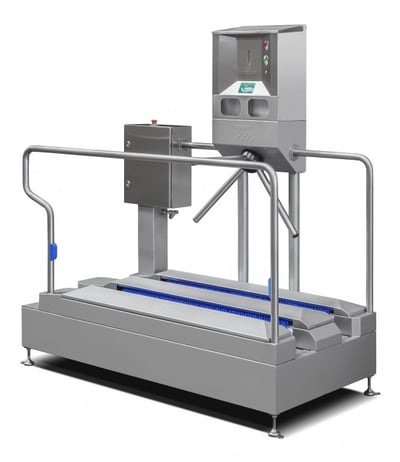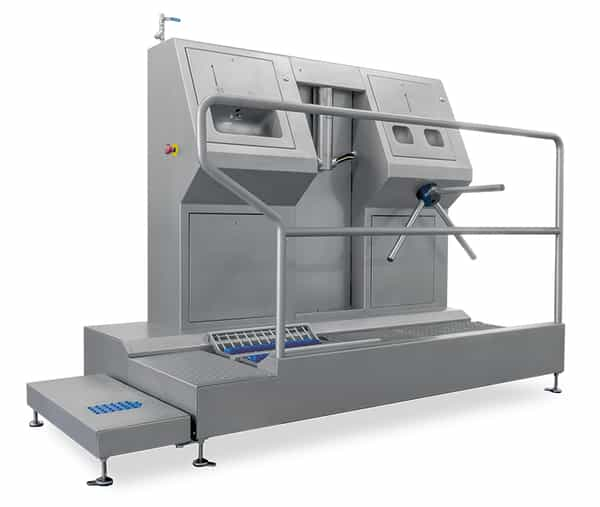Why put faith in access control systems in the food industry?
Access control systems in the food industry have been improving and responding to the biosafety and hygiene demands of the sector for years.
The corresponding legislative requirements and the firm commitment on the part of companies to offer the best possible guarantees have been decisive in the development of major technical advances in the industry. In spite of this, the devices increase their functions and improve their efficiency year by year.
Protocol in the process of operator hygiene
Personnel play a crucial role in the food industry, which is why all safety and hygiene protocols, as well as current regulations, pay special attention to their actions. In fact, operators' hands and footwear are considered two of the main vehicles for the transmission of microorganisms to food.
With regard to hand hygiene, the steps that operators must follow go through six phases: wetting, soaping, rubbing, rinsing, drying and disinfecting. The hands, thoroughly wetted in water suitable for human consumption, should be lathered over the entire surface from the base of the palm to the fingertips, not forgetting the back of the hands. Then rub the extremities together for at least 20 seconds, after which rinse until the soap disappears completely. The last two steps are to thoroughly remove the water with disposable paper and to disinfect, without contact, with a hydroalcoholic antiseptic in solution or gel form.
As for footwear, which is used for professional work should be sanitized in a different room than the one in which food is handled. In addition, if possible, it should be done by means of a sanitary step or a boot-washing machine. These passages clean the soles and backs of boots and prevent contaminants from being transferred between rooms.
Advantages of access control systems
Access control systems in the food industry are key to avoid cross-contamination, establish the routes taken by operators and monitor their routes. They also make it possible to establish the desired flow of personnel traffic. All of this, in addition to preventing unauthorized persons from entering a certain area.
Types of access control for the food industry
Access control systems in the food industry have evolved a lot in recent times. Before choosing a specific model, it is advisable to check its technical characteristics and assess whether it meets the specific needs required, since there are devices that offer a wide variety of functions. Two good examples of high performance and efficiency are the integrated hygiene station MHS-5 LZ and the integrated hygiene station Sanicompact 9KJ.
Integrated hygiene station MHS-5 LZ
The integrated hygiene station MHS-5 LZ is equipped with 6 rotating brushes and a DUOMANS hand disinfection unit, ensuring strict hygiene control. In addition, it offers a continuous passage of personnel without the need to set a waiting time. All models are available with 3 brush lengths in sizes S, M and L.
Integrated hygiene station Sanicompact 9KJ
The integrated hygiene station Sanicompact 9KJ goes one step further in access control by only allowing entry to personnel who have previously washed, rinsed and sterilized their hands. It has a flow rate of one person every 9 seconds and features sole washing and final air curtain to avoid excess water, hand soap dosing, automatic washing and rinsing, along with Dyson Airblade 9KJ drying and hand sanitizing. On the other hand, its PLC controls all the phases carried out by each operator and it also has an antibacterial mat. When one operator has completed the washing and rinsing phases, the next operator can start washing.
